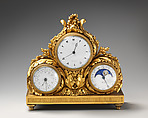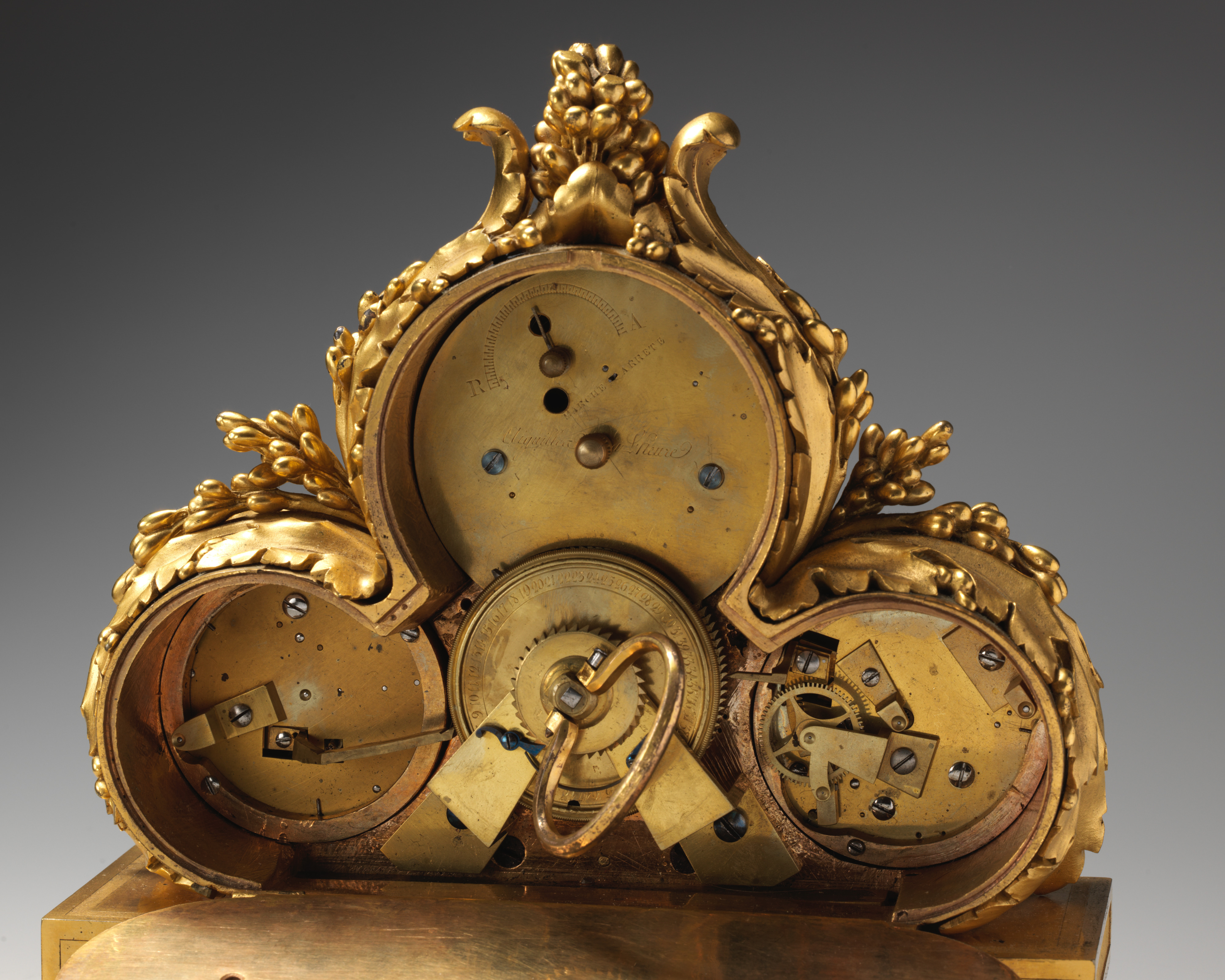Clock with perpetual calendar and moon cycle inscribed in Arabic
Jean Antoine Lépine French
Spanning from the mid-eighteenth century to the beginning of the nineteenth, this group of clocks recently given to the museum by Jayne Wrightsman reflect the sophistication of French clockmaking towards the close of the ancien régime. In the mid-eighteenth century, France was the most important location for the creation of clocks and, particularly, their cases. French clockmakers were willing to eliminate pieces of a clock’s mechanics that many clockmakers in other countries refused to remove, which allowed their machinery to take up less space. And although similar clocks were created in both England and France, the French versions are far rarer. In the eighteenth century, Cartel clocks and watches became more popular in France, as did clocks that hosted groups of statues, encouraging clockmakers to create the least intrusive mechanics possible. The result is the extremely detailed decorative cases seen in this collection, which demonstrate Jayne Wrightsman’s refined understanding of French horology.
Due to rights restrictions, this image cannot be enlarged, viewed at full screen, or downloaded.
This artwork is meant to be viewed from right to left. Scroll left to view more.



